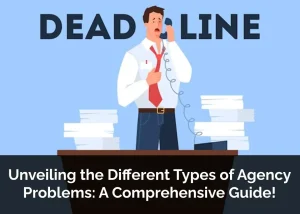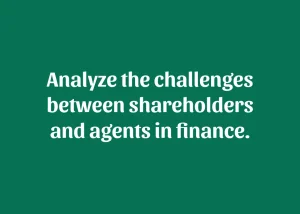Adverse selection is a term used to describe the phenomenon where one party has more information than another, leading to a market failure. This can have far-reaching consequences for various industries, including insurance, healthcare, and finance.
Understanding adverse selection is crucial for companies to create effective business strategies that can mitigate its impact and ensure long-term success. In this blog post, we will explore adverse selection and its effects on various industries.
We will examine the concept of adverse selection in detail, analyze its impact on business operations, and discuss ways in which businesses can address the challenges presented by this phenomenon. By examining real-world examples of adverse selection in action, we will provide readers with an insight into the complexities of this issue and the importance of devising effective business strategies that take it into account.
From analyzing the impact of adverse selection on the healthcare industry to examining how it affects the insurance market, this blog post is a must-read for anyone interested in understanding the dynamics of adverse selection and its effects on various industries.
Earn a certificate in your dream career for an affordable price at IAP Career College today!
Definition of adverse selection
Adverse selection is a phenomenon that occurs when one party in a transaction has access to more information than the other party, which leads to an imbalance of information. In this situation, the party with more information is better equipped to make decisions that benefit them, often at the expense of the other party.
Adverse selection is a challenge that affects many industries, including insurance, lending, and the labor market. In the context of insurance, adverse selection occurs when individuals with a higher risk of making a claim are more likely to purchase insurance, leading to higher costs for the insurer and potentially higher premiums for all policyholders.
In the lending industry, adverse selection can lead to a situation where borrowers who are more likely to default are the ones seeking loans, leading to higher default rates for lenders. These Adverse Selection Challenges can have a significant impact on the overall efficiency and stability of industries, making it important for businesses to proactively address the issue.
How it affects insurance markets
The concept of adverse selection challenges various industries, including the insurance market. Adverse selection refers to the situation where individuals with a higher risk of loss are more likely to seek insurance coverage than those with a lower risk of loss.
This phenomenon, in turn, affects the insurance market in several ways. Firstly, it results in an increase in the cost of insurance premiums, as insurers need to charge higher premiums to cover the higher risk of loss associated with those who seek coverage.
Secondly, adverse selection leads to a reduction in the number of healthy individuals who purchase insurance coverage, which further exacerbates the problem of higher premiums. As a result, insurance companies may be forced to exit markets or reduce their coverage offerings, which can have a negative impact on consumers who rely on insurance for protection against unexpected losses.
To mitigate the effects of adverse selection, insurance companies must carefully assess risk levels and develop pricing strategies that account for the potential of higher-risk individuals seeking coverage.
Adverse selection in healthcare
Adverse selection is a concept that describes a situation where one party has more knowledge than the other party in a market transaction. In healthcare, adverse selection challenges arise when individuals who are more likely to require expensive medical care sign up for health insurance.
This can result in higher premiums for all insured individuals, as insurers need to cover the increased costs of medical care for these high-risk individuals. Adverse selection challenges can also lead to a decrease in the number of healthy individuals buying health insurance, which further exacerbates the issue by creating a smaller pool of insured individuals to spread the cost of healthcare across.
As a result, insurers may end up leaving the market or increasing premiums to unaffordable levels, leaving many individuals without access to basic healthcare services. The Adverse selection challenges have significant effects on various industries, and it is important for policymakers and businesses to understand and address these issues to ensure equitable access to healthcare for all.
Adverse selection in finance
Adverse selection is a phenomenon that arises when one party in a transaction has more information than the other party. In the context of finance, it refers to a situation where only the borrower knows their true level of risk, while the lender is unaware of this information.
This can lead to adverse selection challenges, where lenders may offer loans with unfavorable terms to high-risk borrowers or decline to lend altogether. Adverse selection can have significant effects on various industries, including insurance, credit markets, and labor markets.
It can also lead to other challenges, such as moral hazard, where borrowers may take on excessive risk knowing that the lender will bear the cost of any losses. Understanding adverse selection and its effects is essential for policymakers, regulators, and market participants to develop effective risk management strategies and promote market efficiency.
Adverse selection in labor markets
Adverse selection is a common problem in labor markets that can lead to significant challenges for employers. The issue occurs when job applicants have private information about their abilities or skills that are not readily apparent to employers.
This information asymmetry can lead to a situation where less capable workers are selected for employment over more qualified candidates, resulting in adverse selection challenges for employers. These challenges can include decreased productivity, increased training costs, and higher employee turnover rates.
To mitigate the effects of adverse selection, employers can implement strategies such as pre-employment screening and testing, reference checks, and offering competitive compensation packages to attract top talent. By addressing these challenges head-on, organizations can create a more efficient and effective labor market that benefits both employers and employees alike.
Adverse selection in the auto industry
One of the significant Adverse Selection challenges in the auto industry is the market for used cars. Adverse selection refers to the situation where one party has more information than the other party in a transaction, leading to an imbalance of power.
In the case of used car markets, sellers have more information about the quality and history of the vehicle than buyers. The sellers may not disclose all the information about the car’s condition, leading buyers to purchase low-quality vehicles and pay more than it’s worth.
As a result, buyers become cautious about buying used cars, which hurts the market’s efficiency. To reduce the adverse selection problem in the used car market, third-party inspection agencies have been established to provide unbiased information about the car’s condition.
Additionally, warranties and guarantees from manufacturers can increase buyers’ confidence to purchase used cars. Thus, it is essential to identify and mitigate adverse selection challenges in industries to promote competition, efficiency, and consumer welfare.
Strategies to mitigate adverse selection
Adverse selection challenges can be a significant issue for many industries, including insurance, healthcare, and financial services. Adverse selection occurs when one party has more information than the other, leading to the selection of risky options.
To mitigate the risks associated with adverse selection, businesses can implement several strategies. First, they can offer incentives to encourage healthy behavior or risk reduction, such as discounts for non-smokers or safer drivers.
Second, they can implement screening procedures to identify high-risk individuals, such as pre-existing medical conditions or past insurance claims. Third, businesses can limit coverage or adjust pricing based on risk factors, such as age, occupation, and lifestyle.
Fourth, they can increase transparency and educate consumers on the risks and benefits of different options. Finally, businesses can work with regulators to establish industry standards and guidelines to ensure fair pricing and coverage. By implementing these strategies, businesses can better manage the challenges associated with adverse selection and provide more effective and reliable services to their customers.
The impact of information asymmetry
Adverse selection challenges arise due to information asymmetry between buyers and sellers in various industries. This occurs when one party has more information about the product or service being sold than the other.
Specifically, when the seller has more information, they may use this to their advantage, resulting in the buyer selecting products or services that are not in their best interest. This can have significant impacts on industries such as insurance, healthcare, and financial markets.
For example, in the insurance industry, consumers who know they are high-risk may be more likely to purchase insurance, resulting in insurers having a disproportionate amount of high-risk clients. This can lead to increased costs for insurers, which are then passed on to consumers through higher premiums.
As a result, it is important for companies to understand the impact of information asymmetry and develop strategies to mitigate the adverse selection challenges that may arise.
The role of government intervention
Adverse selection challenges are a prevalent issue in various industries, and the role of government intervention is crucial in addressing them. Adverse selection occurs when one party has access to more information than the other, leading to the selection of undesirable options.
As a result, adverse selection may cause market failure, leading to reduced competition, lower quality products, and increased pricing. Government intervention can help address adverse selection challenges by introducing regulations that increase transparency and ensure that information is available to all parties.
For instance, the government can mandate disclosure requirements to ensure that all parties have access to the same information. Additionally, the government can intervene by providing subsidies to encourage the use of desirable options or by imposing taxes on undesirable options. In conclusion, government intervention plays a critical role in addressing adverse selection challenges in various industries.
Future implications for industries
Adverse selection challenges are a major concern for various industries and can have significant implications for their future. In the insurance industry, for example, adverse selection can result in higher premiums, as individuals with a higher likelihood of making claims are more likely to purchase insurance.
This, in turn, can lead to a smaller pool of insured individuals and ultimately drive up costs for everyone. Similarly, in healthcare, adverse selection can lead to an imbalance in the pool of insured individuals, with those with higher healthcare needs more likely to get coverage.
This can result in higher healthcare costs for insurance providers and ultimately consumers. Other industries, such as the financial sector, can also be impacted by adverse selection, as it can lead to higher risks and ultimately affect profitability.
As such, it is important for industries to understand the potential implications of adverse selection and take steps to mitigate its effects. This may include measures such as risk assessment and pricing strategies, as well as developing innovative solutions to address potential challenges. By proactively addressing adverse selection challenges, industries can better position themselves for success in the future.
Conclusion: Explore the adverse selection and its effects on various industries.
In conclusion, adverse selection can have significant impacts on various industries, from health insurance to the used car market. It occurs when one party in a transaction has access to information that the other party doesn’t, leading to an unequal distribution of risk and potentially negative consequences.
While some industries may be more vulnerable to adverse selection than others, it is essential to understand the concept and its impacts. By implementing preventative measures and risk mitigation strategies, industries can limit the effects of adverse selection and ensure a fair and equitable marketplace for all parties involved.





